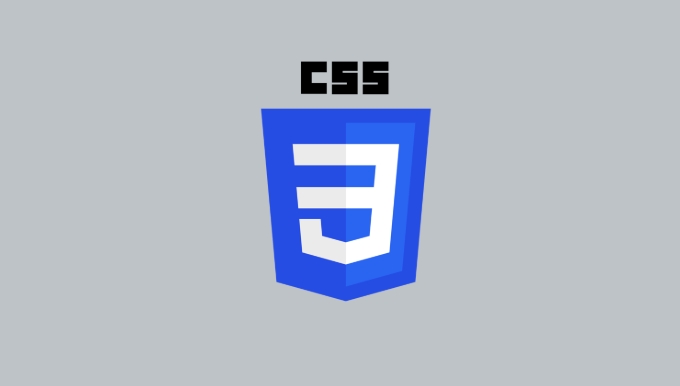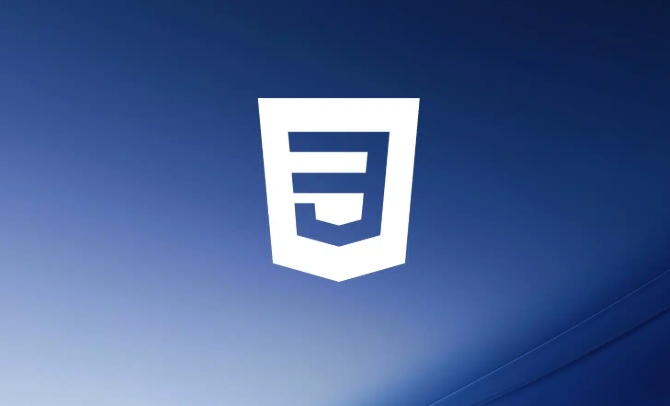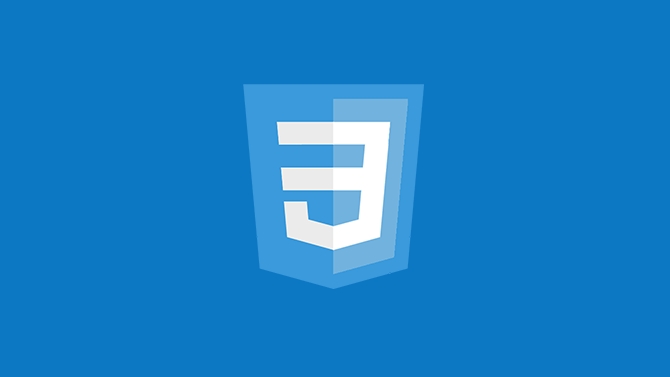CSS variables improve the neatness and maintenance of the code by storing reusable values ??and achieving one modification and multiple modifications. Its core role is to simplify stylesheet management and support dynamic updates and local scope control. When using it, you need to define variables with the -- prefix, call them through the var() function, pay attention to naming specifications and scope division, and be wary of spelling errors and compatibility issues. The specific points are as follows: 1. Use --prefix to define variables, usually declare global variables in: root; 2. Reference variables through the var() function; 3. Any CSS value such as color, size, shadow, etc. can be stored; 4. Local variables should be defined in a specific selector to avoid conflicts; 5. Dynamic updates can be achieved through JavaScript or media queries; 6. Pay attention to spell checking, inheritance behavior and browser compatibility issues. The rational use of CSS variables can significantly improve development efficiency and code maintainability.

Using CSS variables (also known as custom properties) can make your stylesheets cleaner, more maintainable, and easier to update. They let you store reusable values—like colors, font sizes, spacing—and change them in one place instead of hunting through your code.

What Are CSS Variables?
CSS variables are defined using the -- prefix inside a selector, usually :root for global scope. You access them with the var() function.

:root {
--primary-color: #007bff;
--spacing: 1rem;
}Then use them like this:
.button {
background-color: var(--primary-color);
padding: var(--spacing);
}They're not just for colors—you can store anything: sizes, shadows, font stacks, even complex gradients.

How to Scope Variables Locally
By default, defining variables on :root makes them globally available. But sometimes you want variables that only apply in certain parts of the site—like a dark theme or a specific component.
Just define them on a selector:
.card {
--bg-color: #f8f8f8;
background-color: var(--bg-color);
} Now, only elements under .card will see that value. This helps avoid naming conflicts and keeps things modular.
Tips:
- Use meaningful names (
--header-padding, not--p1) - Keep local variables tightly scoped
- Don't overdo it—some values ??are fine being hard-coded
Updating Variables Dynamically
One of the big wins with CSS variables is being able to change them at runtime—say, switching themes or adjusting layout based on user input.
You can do this in JavaScript:
document.documentElement.style.setProperty('--primary-color', '#ff0000');
Or with media queries:
@media (max-width: 600px) {
:root {
--spacing: 0.5rem;
}
}This flexibility makes responsive design and theming easier without needing extra classes or preprocessors.
Common Pitfalls and Gotchas
Even though CSS variables are powerful, there are a few things to watch out for:
- No fallback if misspelled : If you typo a variable name, like
var(--primry-color), it won't work and won't warn you. - Cascading behavior matters : Variables inherit like normal properties, so changing a parent's variable affects children.
- Old browser support : Most modern browsers support them, but not IE11.
To stay safe:
- Double-check variable names
- Use fallbacks when needed:
color: var(--text-color, black); - Consider tools like PostCSS if you need broader compatibility
That's the core of working with CSS variables. They're not complicated, but they do require attention to naming and scope. Once you get used to them, you'll probably wonder how you ever managed without.
The above is the detailed content of CSS tutorial on variables and custom properties. For more information, please follow other related articles on the PHP Chinese website!

Hot AI Tools

Undress AI Tool
Undress images for free

Undresser.AI Undress
AI-powered app for creating realistic nude photos

AI Clothes Remover
Online AI tool for removing clothes from photos.

Clothoff.io
AI clothes remover

Video Face Swap
Swap faces in any video effortlessly with our completely free AI face swap tool!

Hot Article

Hot Tools

Notepad++7.3.1
Easy-to-use and free code editor

SublimeText3 Chinese version
Chinese version, very easy to use

Zend Studio 13.0.1
Powerful PHP integrated development environment

Dreamweaver CS6
Visual web development tools

SublimeText3 Mac version
God-level code editing software (SublimeText3)

Hot Topics
 How can I include CSS only on some pages?
Jun 11, 2025 am 12:01 AM
How can I include CSS only on some pages?
Jun 11, 2025 am 12:01 AM
There are three ways to selectively include CSS on a specific page: 1. Inline CSS, suitable for pages that are not frequently accessed or require unique styles; 2. Load external CSS files using JavaScript conditions, suitable for situations where flexibility is required; 3. Containment on the server side, suitable for scenarios using server-side languages. This approach can optimize website performance and maintainability, but requires balance of modularity and performance.
 Flexbox vs Grid: Understanding the Key Differences in CSS Layout
Jun 10, 2025 am 12:03 AM
Flexbox vs Grid: Understanding the Key Differences in CSS Layout
Jun 10, 2025 am 12:03 AM
Flexboxisidealforone-dimensionallayouts,whileGridsuitstwo-dimensional,complexlayouts.UseFlexboxforaligningitemsinasingleaxisandGridforprecisecontroloverrowsandcolumnsinintricatedesigns.
 Creating an Auto-Closing Notification With an HTML Popover
Jun 10, 2025 am 09:45 AM
Creating an Auto-Closing Notification With an HTML Popover
Jun 10, 2025 am 09:45 AM
The HTML popover attribute transforms elements into top-layer elements that can be opened and closed with a button or JavaScript. Popovers can be dismissed a number of ways, but there is no option to auto-close them. Preethi has a technique you can u
 What is 'render-blocking CSS'?
Jun 24, 2025 am 12:42 AM
What is 'render-blocking CSS'?
Jun 24, 2025 am 12:42 AM
CSS blocks page rendering because browsers view inline and external CSS as key resources by default, especially with imported stylesheets, header large amounts of inline CSS, and unoptimized media query styles. 1. Extract critical CSS and embed it into HTML; 2. Delay loading non-critical CSS through JavaScript; 3. Use media attributes to optimize loading such as print styles; 4. Compress and merge CSS to reduce requests. It is recommended to use tools to extract key CSS, combine rel="preload" asynchronous loading, and use media delayed loading reasonably to avoid excessive splitting and complex script control.
 How to use Lotties in Figma
Jun 14, 2025 am 10:17 AM
How to use Lotties in Figma
Jun 14, 2025 am 10:17 AM
In the following tutorial, I will show you how to create Lottie animations in Figma. We'll use two colorful designs to exmplify how you can animate in Figma, and then I'll show you how to go from Figma to Lottie animations. All you need is a free Fig
 Breaking Boundaries: Building a Tangram Puzzle With (S)CSS
Jun 13, 2025 am 11:33 AM
Breaking Boundaries: Building a Tangram Puzzle With (S)CSS
Jun 13, 2025 am 11:33 AM
We put it to the test and it turns out Sass can replace JavaScript, at least when it comes to low-level logic and puzzle behavior. With nothing but maps, mixins, functions, and a whole lot of math, we managed to bring our Tangram puzzle to life, no J
 External vs. Internal CSS: What's the Best Approach?
Jun 20, 2025 am 12:45 AM
External vs. Internal CSS: What's the Best Approach?
Jun 20, 2025 am 12:45 AM
ThebestapproachforCSSdependsontheproject'sspecificneeds.Forlargerprojects,externalCSSisbetterduetomaintainabilityandreusability;forsmallerprojectsorsingle-pageapplications,internalCSSmightbemoresuitable.It'scrucialtobalanceprojectsize,performanceneed
 Does my CSS must be on lower case?
Jun 19, 2025 am 12:29 AM
Does my CSS must be on lower case?
Jun 19, 2025 am 12:29 AM
No,CSSdoesnothavetobeinlowercase.However,usinglowercaseisrecommendedfor:1)Consistencyandreadability,2)Avoidingerrorsinrelatedtechnologies,3)Potentialperformancebenefits,and4)Improvedcollaborationwithinteams.






